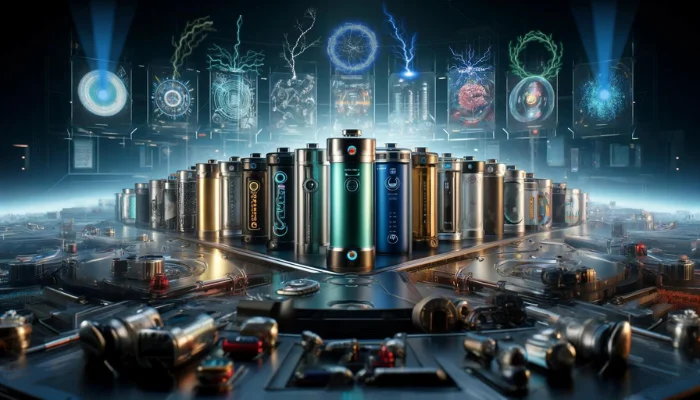So, picture this: sunlight, that incredible cosmic disco ball, beaming down on our planet with energy potential beyond measure. It’s like nature’s own power station, showering us with clean, renewable energy.
And guess what?
It’s now the cheapest way to generate electricity, even more affordable than coal!
But, hold on a second. Despite this mind-blowing feat, solar energy accounts for just a measly three percent of the world’s electricity.
How did we end up in this puzzling situation, where we have this incredible power at our fingertips, yet we’re not harnessing it to its full potential?
Buckle up, because we’re about to uncover the intriguing tale of how solar energy became so cheap and why it’s not dominating the scene just yet.
Oh, and did I mention that we’ll be talking ducks along the way? Intrigued? Let’s dive in!
From Price Shock to Solar Sweetness
“I remember the days when solar panels cost an arm and a leg,” reminisces Jenny Chase, the solar superstar at BloombergNEF. Back in 2005, solar seemed like a luxurious choice, costing around $4 per watt.
Fast-forward to today, and that same watt costs a mere 20 cents!
Talk about a jaw-dropping transformation.
But here’s where the plot thickens.
This remarkable price plummet happened over just fifteen years, like a Cinderella story of the energy world. If you peek further into history, the drop in solar prices is even more jaw-dropping.
The Solar Symphony: A Global Collaboration
Surprisingly, this extraordinary solar journey wasn’t led by a single country. It was more like a global jam session where each nation added a unique note to the melody.
Let’s break it down:
1. The US Tech Pioneers: The solar revolution’s seed was planted in the US with the invention of the modern silicon solar cell in 1954. A tech marvel that was initially a space industry darling, solar’s potential took time to unfurl.
2. Germany’s Vision: Enter Germany, circa 2000. The country passed a law that breathed life into renewable energy development. They put a solid price tag on clean energy, and voilà!
People and companies were suddenly eager to set up those solar panels. It’s like Germany handed solar a VIP ticket to the energy party.
3. China’s Grand Scale: But the real rockstar moment came when China stepped into the spotlight. When Germany’s renewable energy law took the stage, China embarked on an ambitious solar mission. They cranked out solar cells like nobody’s business, building an industry giant while the West was still tuning its instruments.
And just like that, China went from an energy bystander to the conductor of a global solar symphony, producing a staggering 70 percent of the world’s solar panels today.

The Catch: Solar’s Sun-Shy Nature
Now, before we roll out the red carpet for solar, there’s one hitch: it’s a bit of a fair-weather friend. See, solar panels are most ecstatic when the sun is giving them a radiant high-five.
But, when those clouds roll in or night falls, solar power takes a snooze, leaving us in a bit of an energy pickle.
Imagine our energy needs as a quirky curve, affectionately known as the duck curve.
This curve wiggles up and down throughout the day, but when you add solar energy into the mix, things get, well, ducky.
In places like sunny California, solar kicks in during daylight hours, but as the sun takes a nap, demand for conventional energy soars. It’s like a solar-powered duck rising and setting!
Enter: Batteries, the Solar Enablers
Now, here’s where things get electrifying. Those lithium-ion batteries, the ones you might find in your gadgets and electric cars, play a stellar role.
Think of them as energy hampers. We string together these cells to create powerful battery packs, ready to store sunlight-kissed energy.
As a result, solar projects now boast battery backups, allowing them to serve up energy even when the sun isn’t up for a chat.
In places like New Mexico, they’re even replacing coal plants with solar farms and their trusty battery companions. These batteries have become more affordable and efficient, creating a mighty energy backup squad.
More To Discover
- Why Renewables Can’t Save Our Planet And Are Actually Part Of The Problem
- Collected Challenges in the Renewables Industry: The Green Energy Sector Has Had Some Bad Days
- California’s Solar Sector Faces Steep Challenges: Lessons from a Shifting Market Landscape
- Panasonic’s Innovative Semi-Transparent Perovskite Solar Panels Look Like Windows or Walls

The Future’s Looking Bright
So, are we staring at a solar-powered future? You bet!
Experts forecast that by 2050, solar could illuminate about 23 percent of the world’s electricity. But some optimists believe that’s a conservative estimate.
By 2030, we might see solar lighting up even more of the global energy stage.
We’ve witnessed solar’s journey from being an expensive curiosity to a cost-effective, eco-friendly powerhouse.
It’s like watching a quiet star finally stepping into the limelight.
And with technology like batteries adding that extra shine, solar energy’s potential is poised to reshape our energy landscape.
So there you have it, the tale of solar energy’s Cinderella moment, how it overcame its sunlight-dependent hiccup, and how it’s gearing up to take center stage in the electrifying world of sustainable energy.
Keep those shades handy – the future’s looking bright, and it’s all thanks to the sun!





















